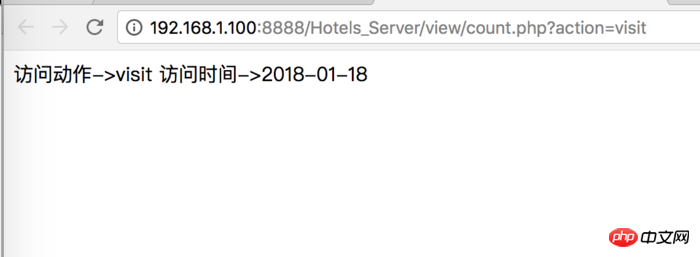
This article mainly introduces the sample code of CSS buried point statistics. The editor thinks it is quite good, so I will share it with you now and give it as a reference. Let’s follow the editor to take a look, I hope it can help everyone.
When the scale of a website or App reaches a certain level and it is necessary to analyze the corresponding operations of users in the App or website, it is necessary to focus on statistics of user behavior. Needless to say, the specific implementation requires writing JS scripts to bury the points. Event and adjustment interface, today I got a new way of tracking statistics, which is refreshing. The following code is a simple demonstration.
//index.html
<!DOCTYPE html>
<html>
<head lang="en">
<meta charset="UTF-8">
<meta name="viewport" content="width=device-width,initial-scale=1,minimum-scale=1,maximum-scale=1,user-scalable=no" />
<title>CSS埋点</title>
<style>
.background {
background-size: 100% 100%;
width: 100%;
height: 100%;
position: fixed;
z-index: -100;
}
html {
background-color: #fff;
}
.notice-content {
border: 1px #ccc solid;
padding: 19px;
border-radius: 10px;
width: 80%;
margin-left: 10%;
margin-top: 10%;
}
.check-content {
padding: 0!important;
width: 80%!important;
margin-left: 25px;
margin-top: 10px;
}
.confirm {
float: left;
position: relative!important;
left: 6%;
height: 32px!important;
line-height: 32px!important;
}
.btn {
border: 1px solid #ff6689;
background-color: #ff6689;
width: 60%;
margin-left: 20%;
margin-top: 36px;
font-size: 16px;
font-weight: bold;
color: #FFFFFF;
}
.title {
display: block;
text-align: center;
font-size: 20px;
margin-bottom: 19px;
}
span {
display: block;
margin-bottom: 7px;
}
.mui-checkbox input[type=checkbox]:checked:before,
.mui-radio input[type=radio]:checked:before {
color: #ff6689;
}
.body-content {
width: 100%;
height: 100%;
}
body {
background-color: rgba(239, 239, 244, 0)!important;
}
.link:active::after{
margin: 100px 100px;
color: red;
content: url("http://192.168.1.100:8888/Hotels_Server/view/count.php?action=visit");
}
</style>
</head>
<body>
<p class="loading">
</p>
<p style="" class="body-content">
<p class="background">
<!-- <img id="background" src="img/background.png"> -->
</p>
<p class="notice-content">
<label class="title">登记须知</label>
<span>1.本次登记仅限于中国地区。</span>
<span>2.完成登记审核通过后,生育登记服务卡可到乡(镇、街道)直接领取,也可选择邮寄到付快递给申请人。</span>
<span>3.申请登记信息需真实完整,如有虚假,申请人将承担相应的法律责任。</span>
</p>
<a class="link title">访问</a>
</p>
</body>
</html>//count.php
<?php
/**
* Created by PhpStorm.
* User: geek
* Date: 2018/1/18
* Time: 上午9:56
*/
$actionName = $_REQUEST["action"];
//时间格式化
$time = time();
$time = Date("Y-m-d",$time);
echo "访问动作->" .$actionName. " 访问时间->" . $time;
?>
css click statistics

Related recommendations:
javascript - Website buried points, statistical user data
php implements word statistics function
The above is the detailed content of Detailed explanation of CSS hidden statistics. For more information, please follow other related articles on the PHP Chinese website!




